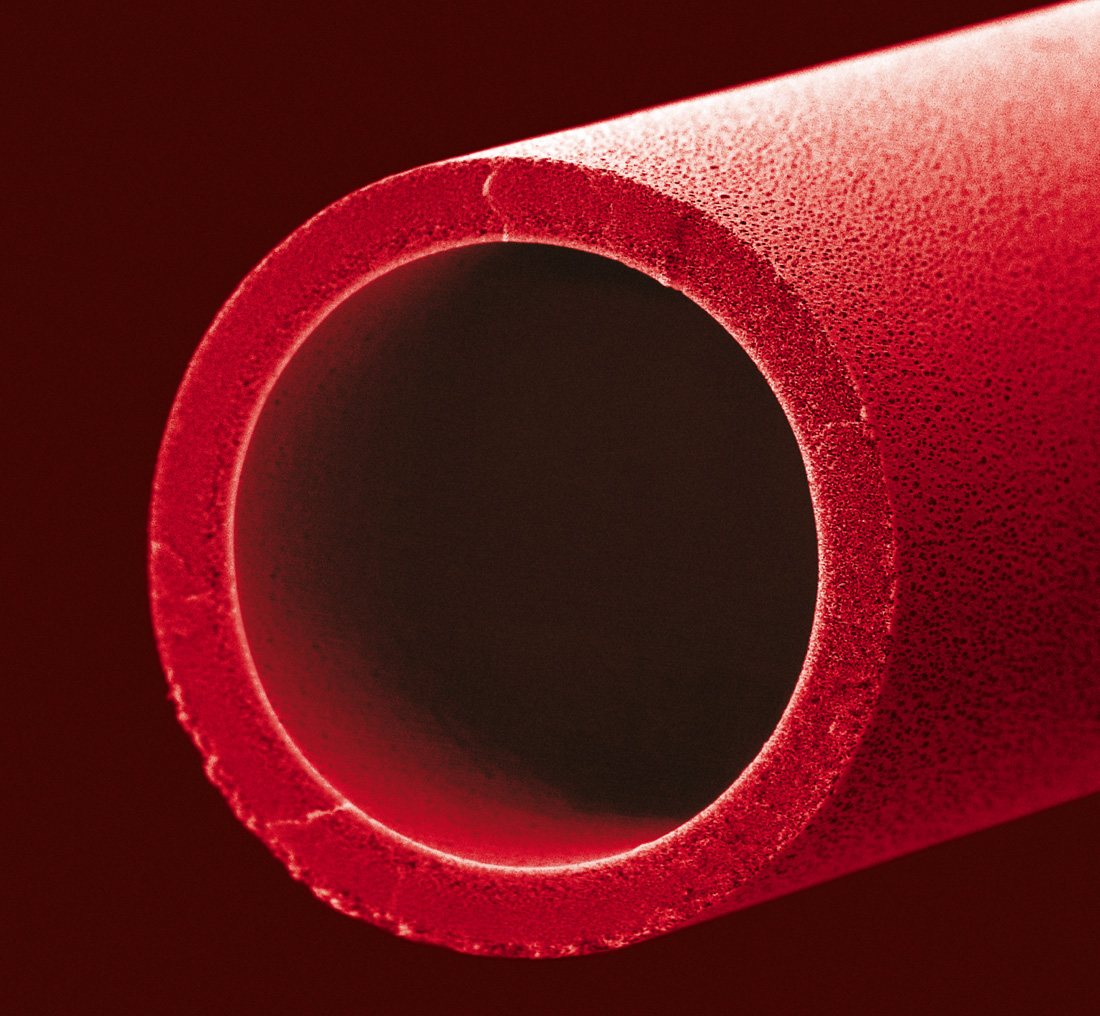Washing machine for blood
Blood poisoning is fatal in almost half of all cases. Patients could be helped by efficient blood cleansing. Scientists are working on a new technique that will quickly and effectively retrieve toxic substances from the vital fluid without altering the blood count.

Blood poisoning is fatal in almost half of all cases. Patients could be helped by efficient blood cleansing. Scientists are working on a new technique that will quickly and effectively retrieve toxic substances from the vital fluid without altering the blood count.
The patient’s body battles relentlessly to overcome an inflammation. If bacteria nevertheless manage to enter and poison the blood, life-threatening septicemia will set in. Doctors need to react quickly and cleanse the lifeblood of the toxic metabolites (endotoxins). This is a complex process: The doctor extracts some of the patient’s blood with a hypodermic needle. A plasma filter separates the cells from the plasma. In a second step, the plasma is percolated through microbead columns containing absorbers that filter out specific toxic substances. The cleansed plasma is reunited with the blood cells and returned to the body. The blood cells must not be permitted to touch the absorber surfaces, as otherwise the blood may clot.
Researchers at the Fraunhofer Institute for Interfacial Engineering and Biotechnology IGB are collaborating with colleagues from the University of Stuttgart and Gambro Dialysatoren GmbH to develop a new kind of hollow fiber membrane for cleansing blood. “The unique feature of our technique is that blood cell separation and plasma cleansing are carried out in a single step,” explains IGB project manager Michael Müller. “This makes it easier to handle the apheresis, or blood cleansing. The smaller amount of equipment required allows costs to be reduced dramatically.” But not only the purse gets a break – so does the patient, who is already debilitated. The new technique enables the amount of blood that is outside the body to be reduced by more than half. In addition, the hollow fiber material does not activate the blood cells – in other words, it does not cause blood clotting. Preparation and follow-up of the treatment are also much shorter and simpler with this system of therapy.
This is how the method works: The blood flows through the porous hollow fibers. Only the plasma passes through the fine pores. The sensitive blood cells are too big and stay on the inside. In this way, the blood is automatically separated into cells and plasma. Receptor molecules, attached only to the surfaces of the fine pores and the outer wall of the fiber, extract the toxins from the plasma. At the far end of the fiber, the toxin-free plasma is recombined with the blood cells from the blood-compatible main channel. This new blood cleansing system has already passed all its laboratory tests, and now Gambro is preparing the first clinical trials for using the technique in apheresis therapy. If these tests are equally successful, the system will become standard hospital procedure in about three to five years’ time.
 Fraunhofer Institute for Interfacial Engineering and Biotechnology IGB
Fraunhofer Institute for Interfacial Engineering and Biotechnology IGB